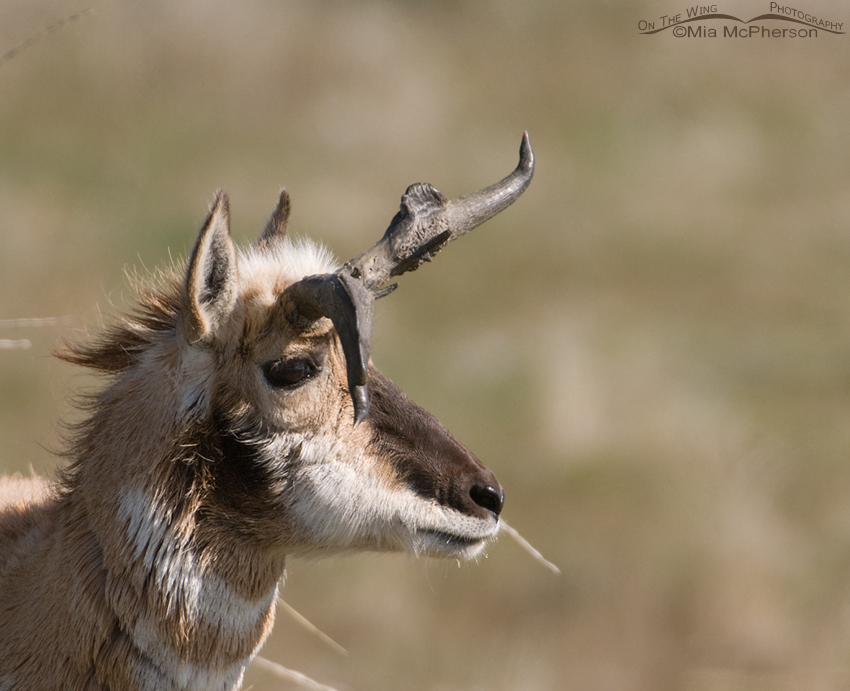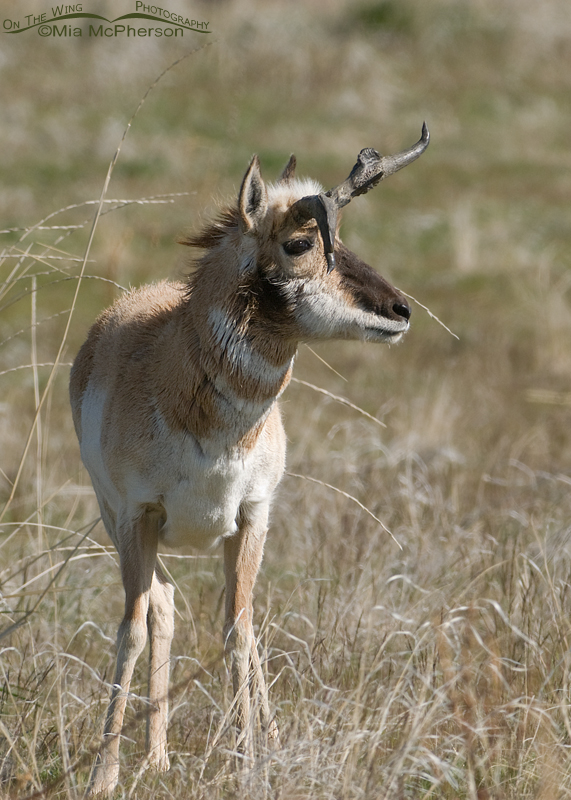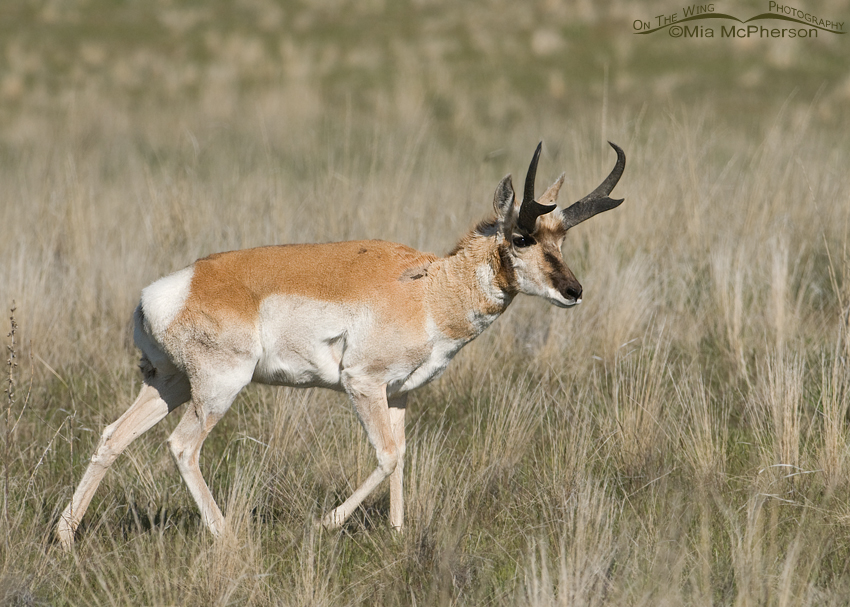 Close up of Pronghorn (Antilocapra americana) buck with misshapen horns – Nikon D200, f6.3, 1/1000, ISO 400, Nikkor 200-400mm VR with 1.4x TC at 400mm, natural light, not baited or called in
Close up of Pronghorn (Antilocapra americana) buck with misshapen horns – Nikon D200, f6.3, 1/1000, ISO 400, Nikkor 200-400mm VR with 1.4x TC at 400mm, natural light, not baited or called in
Last fall I saw a Pronghorn that had misshapen horns, as luck would have it though the pronghorn was going away from me, was partially covered by tall grasses and the light just stank. The photos I took of it were not great but they served to remind me of the unusual horn formation on the buck.
Ron and I got lucky two days ago and came across that same Pronghorn buck in a bit better light and we were closer. This buck is located in a no hunting area otherwise it might not be around because of its atypical horns, hunters treasure them.
 Pronghorn buck with misshapen horns – Nikon D200, f6.3, 1/1250, ISO 400, Nikkor 200-400mm VR with 1.4x tc at 400mm, natural light, not baited or called in
Pronghorn buck with misshapen horns – Nikon D200, f6.3, 1/1250, ISO 400, Nikkor 200-400mm VR with 1.4x tc at 400mm, natural light, not baited or called in
I had hoped to come across this pronghorn buck again to get better photos of the unusual horns with one jutting out almost straight at a strange angle and the other curling down past the pronghorn’s eye. Other than the unusual horns the pronghorn seems healthy in every way. I watched as it ate grasses and new spring leaf growth without any difficulties at all, it does not seem negatively affected by the one horn partially blocking its vision.
 Normal Pronghorn buck – Nikon D200, f7.1, 1/1250, ISO 400, Nikkor 200-400mm VR with 1.4x TC at 240mm, natural light, not baited or called in
Normal Pronghorn buck – Nikon D200, f7.1, 1/1250, ISO 400, Nikkor 200-400mm VR with 1.4x TC at 240mm, natural light, not baited or called in
The photo above of a normal pronghorn buck shows what the horns usually look like on a buck. This photo was taken a little earlier on the same day as the images of the buck with the misshapen horns.
For me, the unique horn formation is intriguing, I wonder if it was caused by physical damage when the pronghorn was very young or if it was genetic. I am just happy to have seen it again and for coming home with better photos of it for my files.
Mia





That is so bizarre, it looks almost like they were partially melted. I wonder if that will affect mate selection.